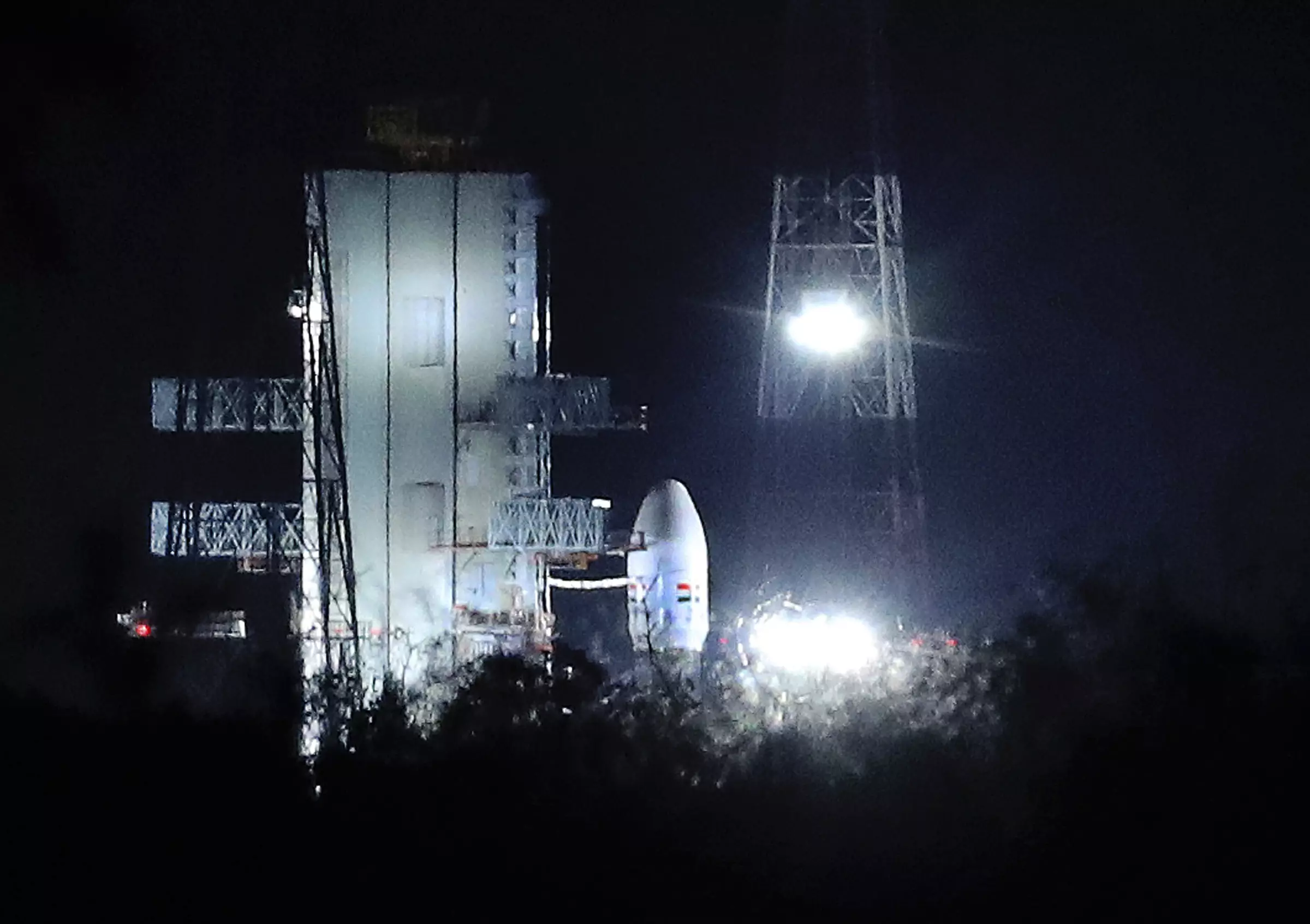
The Indian Space Agency has successfully launched an unmanned rocket to the moon in an attempt to make a soft landing and get a lunar rover onto the moon's south pole.
This attempt represents a landmark moment in India's journey to becoming a space superpower.
The latest attempt - called Chandrayaan-2 - departed from the Satish Dhawan Space Centre in Sriharikota, Andhra Pradesh at 14:43 local time (09:13 BST).
This launch is actually the second attempt to get the rocket into space, after a first effort was cancelled less than an hour before the launch time on 15 July as a result of a 'technical snag'.

India is looking to become the fourth country to make a soft landing on the lunar surface, following in the footsteps of China, the United States of America, and the former Soviet Union.
Advert
The rocket weighs 3.8 tons and consists of three parts - a lunar orbiter, a landing module and a lunar rover. All of the technology has been developed by the Indian Space Research Organisation (ISRO).
The rocket will travel for two months before entering orbit 100km above the surface of the moon. Vikram, the lander named after a legend of Indian space exploration called Vikram Sarabhai, will then separate from the main body of the rocket and attempt a landing near to the moon's southernmost point.
If that is a success, the lunar rover - called Pragyan, which means 'wisdom' - will spend an entire lunar day (that's 14 Earth days) on the surface conducting experiments and gathering mineral and chemical samples.

ISRO said in a statement: "While there, we will also explore discoveries made by [the mission prior to this latest one] Chandrayaan-1, such as the presence of water molecules on the Moon and new rock types with unique chemical composition.
Advert
"Through this mission, we aim to expand India's footprint in space, surpass international aspirations and inspire a future generation of scientists, engineers and explorers."
Rajeswari Pillai Rajagopalan, the head of the Indian nuclear and space policy initiative at the Observer Research Foundation, said: "India wants to show, especially since Prime Minister [Narendra] Modi came into office, that India is a major power, and that India has to be treated as a major Indo-Pacific power,"
This mission will then be followed up by Chandrayaan-3, which will aim to take another rocket to the moon at some time between 2023 and 2024.
Featured Image Credit:Topics: Science, World News, Interesting, Technology, space